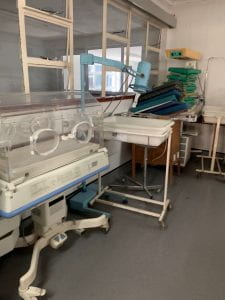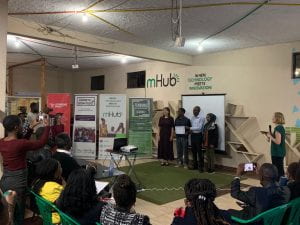Yet another week has gone by and this time with a bit of adventure. This past week seemed to be centered around people and opportunity. Before we left for the Malawi Technology Pitch Innovation Night in Lilongwe, we had the opportunity to visit the NICU at Queen Elizabeth Central Hospital (Rice’s main hospital partnership in Malawi) and speak with Prince an experienced NICU nurse who is well known in the Rice 360 community. Although Prince is a full-time nurse at the NICU, he has a technical background and is passionate about improving the healthcare at Queens and in Malawi. He has also served as a mentor to many Rice 360 class projects and facilitates the implementation of the new technology developed in the hospitals. Essentially, he is one of the main connections between the theoretical design of a device and actual patient use. Another memorable person we met at Queens was  Nurse Florence. She is one of the nurses working with Rice since the very beginning of their partnership and has given feedback on majority of the Rice 360 projects implemented at Queens. While touring the NICU, we had the opportunity to ask Florence about our potential design solution and temperature specifications. She identified the current heating systems in the NICU, but what really caught our attention were the nonfunctional incubators shoved in a corner that are only used to transport babies between the wards and the stationary hot cots used to heat the babies once in the NICU. Originally our design for transport consisted of an enclosed environment with a water heater however after our visit to Queens, we decided to alter source of heat to light bulbs like that of a hot cot. Although our design has gone through many iterations and we do not have all the specifications finalized, I believe this is potentially a reliable alternative to the current methods of neonatal transport between wards.
Nurse Florence. She is one of the nurses working with Rice since the very beginning of their partnership and has given feedback on majority of the Rice 360 projects implemented at Queens. While touring the NICU, we had the opportunity to ask Florence about our potential design solution and temperature specifications. She identified the current heating systems in the NICU, but what really caught our attention were the nonfunctional incubators shoved in a corner that are only used to transport babies between the wards and the stationary hot cots used to heat the babies once in the NICU. Originally our design for transport consisted of an enclosed environment with a water heater however after our visit to Queens, we decided to alter source of heat to light bulbs like that of a hot cot. Although our design has gone through many iterations and we do not have all the specifications finalized, I believe this is potentially a reliable alternative to the current methods of neonatal transport between wards.

After we arrived in Lilongwe for the pitch competition, we arranged a visit to the Physical Asset Management Department (PAM), where all the broken and malfunctioning devices go to be repaired, at Kamuzu Central Hospital to gain some more insight to our projects as well as conduct needs finding for possible future projects. We spoke with one of the PAM technicians about some of the most frequent devices that they receive for repairs as well common challenges they face. He said the main challenge they face are insufficient funds which leads multiple complications such as understaffing, a lack of materials (parts, consumables, etc.), and lack of training. This also increases the duration it takes for a device to be delivered to PAM and then be ready for patient use again. Another major problem they face particularly in Lilongwe are dust and humidity. For sensitive medical devices such as oxygen concentrators, this causes the need for frequent repairs and a shorter lifespan of expensive equipment. Ultimately, our visit to PAM was insightful to the treatment and use of medical equipment. It also offered a new engineering perspective on medical devices used in the hospital setting which have not had the opportunity to experience fully. Being able to observe both nurse and technician’s interaction the equipment as an engineer makes me think about the different needs of both parties specific to design of a solution.

That night was the long-awaited Malawi Technology Innovation Pitch Night where ten student teams would compete against each other for the best design concept including one of our own, Simple Ballard. Not only were brilliant students gathering to present their innovative ideas, donors from the Lemelson Foundation and partners of NEST 360 attended as well (no pressure and my team wasn’t even presenting). As the competition began and presentations went on, each team seemed to get better and better. One of my favorite teams to present was Cold Box. The concept behind their project an insulated cold box made for transporting large quantities of blood, vaccines, and other biohazardous materials long distances across Malawi. What really surprised me was how much they had thought through their design to the point of having an existing relationship with the Malawi Blood Transfusion Services and sent a prototype to a company in Geneva in hopes of securing a partnership. Not only did I think this was great project so did the judges because they received second place. Overall each team did very well and was a clear representation of the passion and motivation of students to pursue innovate ideas and impact their community. Although every team was not able to showcase their talent at the pitch competition, there are plenty of students with the same passion for innovation we see working hard on their projects in the design studio and I hope to see them continue it.
– S